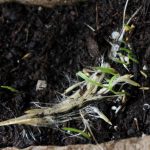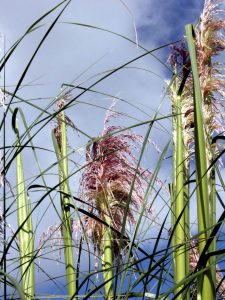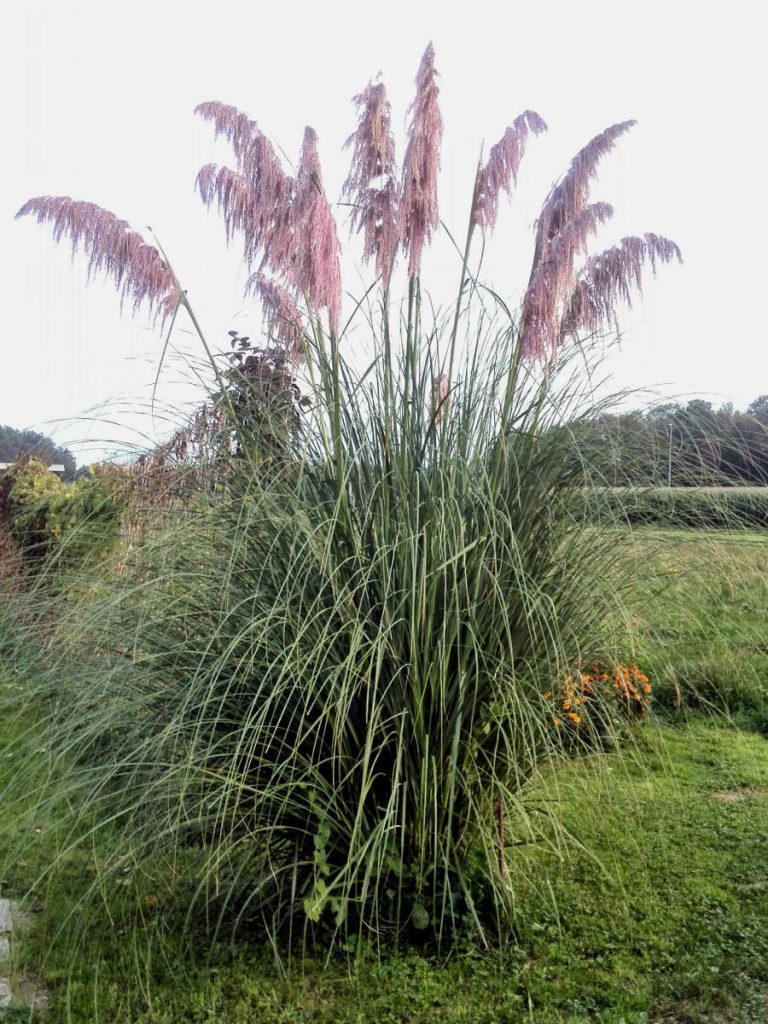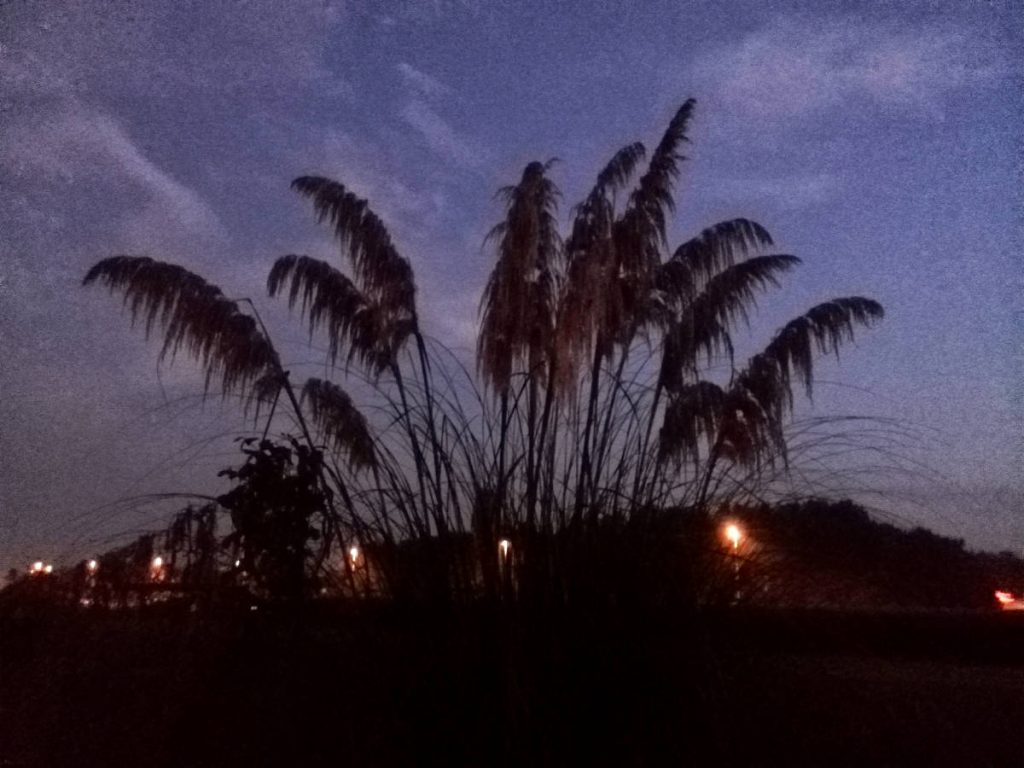Pampas grass

Cortaderia selloana commonly known as Pampas grass is a tall grass native to South America. It forms dense clumps and can grow with fascinating speed if growing conditions are optimal. Cortaderia selloana likes to grow in full sun and can handle drought quite well. Pampas grass forms showy plumes on up to 3 m tall stems. Its leaves are razor sharp so you have to be extremely careful when you prune it. Do not even think about handling this blood-thirsty beast without long sleeves and gloves, it’s leaves are sharp as razor blades and can easily cut deep through the skin. Pruning should be done in early spring or late winter. Make sure you don’t cut too deep too early! Dry leaves act as protective layer for the roots and developing shoots. Roots are safe inside the dense layer of dead plant material, but will get exposed after pruning, especially if you drastically cut near the soil level. Some say it can be burnt in early spring after it gets established enough, but I never really decided to try this method.


Seedlings appear in just a couple of days after sowing. Seedlings grow slow at first, but with every new leaf, growth speeds up a bit. In colder regions with severe frosts, best thing to do is keeping the seedlings somewhere protected during their first winter. It’s important to keep it in cold location at around 5°C when overwintering. If kept in cold location it doesn’t need much care or light. If temperature is higher, it starts actively growing which means it needs a lot of strong light (direct sun), occasional watering and fertilization. As mentioned before, pampas grass is quite resilient to dry conditions, but it’s prone to root rot if kept in overly moist soil, especially during the winter.
Seedlings usually set their first flowers during their second growing season in late summer or early fall. Here, it usually sets flowers in mid to late September and keeps them until first heavy wet snow manages to break the dried out tall plumes. It’s highly ornamental during early winter, especially if you leave the flowers.

